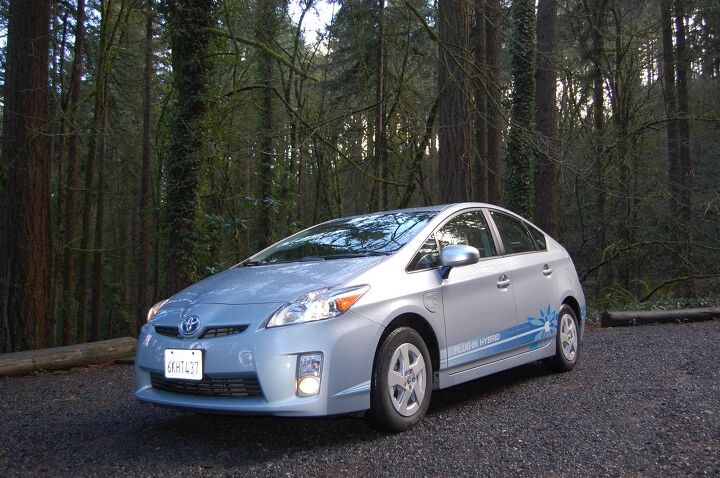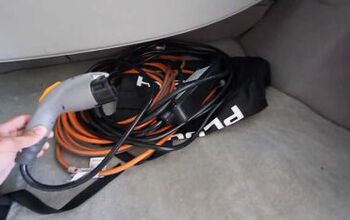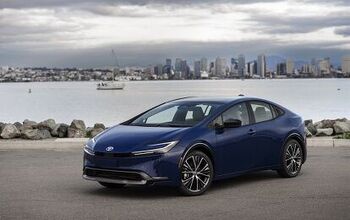Quick Review: Toyota Prius Plug-In
It’s not every day that an automotive blogger gets to drive the future of transportation, a radical rethinking of how we interact with our private transport, and yet that’s exactly what I recently did. And no, I’m not talking about the Prius Plug-In Hybrid (PHEV)… that’s just a Prius with some larger batteries and re-worked software. No, what makes our time with this particular Prius noteworthy is that it isn’t technically private transport. Welcome to the future: the public plug-in hybrid (PPHEV).
This Prius Plug-In is not some press-fleet hack, nor is it a carefully-fettled launch vehicle, but a publicly-accessible, real-world test fleet vehicle that Toyota uses to gain insights into how its evolution of the Prius holds up to the rigors of regular use. Toyota has produced some 600 Prius PHEVs, and has delivered about 150 to different testing partners around the US, who are helping the Japanese automaker test its first lithium-ion battery-equipped plug-in ahead of regular production sales, which begin in 14 US states in 2012.
This particular model is one of two operated in Portland, OR, by the car-sharing firm Zipcar. As a publicly-accessible plug-in vehicle, this is one special Prius; after all, as TTAC has explained, private ownership of EVs is a problematic proposition. The biggest issue with buying a plug-in: batteries degrade significantly over time, raising the specter of killer depreciation. As a result, the more conservative automakers like Daimler and BMW are looking at Zipcar-like car sharing schemes for their forthcoming EVs. But, as we found, publicly-shared plug-ins aren’t exactly a silver bullet either.
The major problem with shared EVs? Like Blanche DuBois, they rely on the kindness of strangers. When we showed up at a Portland State University parking structure to pick up our Plug-In Prius, its mobile charging unit was plugged into a 120V outlet, but its charging plug lay on the floor next to the decal-wearing Prius. So much for a full test of the Prius PHEV’s electric range and fully-charged performance then… but the experience was an important real-world lesson in the downfalls of EV-sharing. And as the industry transitions towards greater electrification, business model innovations are as important as technological breakthroughs. So what’s worse: wallet-melting depreciation, or total dependence on the last driver’s conscientiousness?
In the case of the Prius, at least the forgetfulness of Joe College Student won’t leave you stranded. Had I rented a Nissan Leaf or a similar pure-EV from Zipcar, I would have been as good as stranded with less than a third of the battery left. Instead I got a as many miles as I wanted of relaxed hybrid driving. Not only is Toyota’s decision to rigorously test its PHEV in public vindicated by our experience with the uncharged Zipcar, but its decision to incrementally improve the Prius rather than leaping into a pure EV also delivers a far more practical vehicle for handling the downsides of car sharing.
Unfortunately, the decision to evolve the Prius also means there’s not much to report in terms of driving impressions that a jaunt in a regular Prius wouldn’t have covered (whether fully-charged or not). When fully charged, the Prius PHEV gets a claimed 13 miles of pure-electric driving before switching into EV mode, a feature that Toyota say plays well with car-sharers who typically take short trips. With less than a third of the Li-ion battery’s charge remaining, we got less than a mile of silent running before heading up into the hills above Portland, when the PHEV kicked into the mixed-hybrid mode that Prius owners know and love. Strangest of all in a vehicle that wears its electric credentials all over its sheet metal: there’s no “EV Mode” button as in the standard Prius.
And, as it turns out, we weren’t missing out on too much pure-EV fun anyway. Over the last 2,790.6 miles driven by our Prius PHEV, EV mode was only used some 15 percent of the time, and in our time with it (granted, without a full charge) it took a seriously light foot to keep it running on Grand Coulee Dam current. The Prius PHEV’s gas engine kicks in early and often as its 650-Volt electric motor’s 153 lb-ft of torque struggle to motivate all 3,130 lbs (about 240 lbs more than the standard Prius), at all but the most leisurely speeds. Only in “Power” mode, does the Atkinson-cycle gas engine woof with conviction, giving the Prius PHEV the kind of acceleration that won’t leave your buttocks clenching uncontrollably on freeway on-ramps. In “Eco” mode, the Plug-In resists every pedal application until just shy of WOT, when it finally booms into action. Strangely, “Eco” Mode doesn’t seem to make accessing electric drive any easier.
So, what kind of mileage can you expect from the Prius Plug-In? We will have to hold a more thorough test (once we figure out how to ensure the thing is fully charged when we pick it up) for definitive results, but the PHEV’s on-board computer indicates that, l ike the Volt, the Prius PHEV is as efficient as you want it to be. For short trips of 26 and 29 miles, drivers received about 60 and 75 MPGs respectively. A longer trip of 54 miles returned near 99 MPG, indicating a near-delta of distance and efficiency. After all, the farther any PHEV is driven, the worse its mileage becomes, as evidenced by 50 MPG results for two “trips” of 440 miles and 2,296 miles. Of course, none of these numbers are exactly scientifically verified, but short there are numerous reports of Prius PHEVs returning in excess of 99 MPG on short trips, with long-range mileage dropping to regular Prius levels (or even lower, thanks to the extra battery weight). In any case, we will certainly be testing the Prius PHEV again with an eye towards obtaining a better sense of its mileage capabilities (and of course we will report Toyota’s official test data when it becomes available later this year).
But despite the fact that we weren’t able to take home solid efficiency numbers, we learned a few important lessons from our time with the Prius PHEV. For one thing, ride sharing will not be a viable alternative to EV ownership until operators learn how to require users to plug in vehicles when they’re done. For another, until plug-in enforcement takes place, the Prius PHEV is the plug-in to share. Under similar circumstances, a Nissan Leaf would have been effectively stranded and a Chevy Volt would have returned only slightly better than 30 MPG. Also, the Prius’s uninspiring but wholly competent performance is unchanged by the addition of extra Lithium-ion batteries. And between its joyride-inhibiting handling, modest power, anodyne styling and easy-to-use, minimalist interior, the Prius was already the straight-out-of-a-vending-machine car of the future.
The Volt beats the Prius PHEV for efficiency if you typically drive between 13 and 40 miles between charges, but then the pure-electric Leaf is the plug-in commuter of choice for green conscious consumers with a sub-100 mile commute. Otherwise, the Volt handles considerably better than the Prius PHEV, has a handy regenerative “low gear” and its performance feels less computer-strangled… but the Prius’s (likely) lower price, superior interior space and design and better efficiency over long-distance trips could well make it the more practical, flexible choice. But until we test a production car, that’s all speculation. For now, car-sharing programs looking for some green-car hype have only one real choice… and given how inconsiderate some car sharers can be, it’s a pretty good one.
More by Edward Niedermeyer
Latest Car Reviews
Read moreLatest Product Reviews
Read moreRecent Comments
- Zelgadis Elantra NLine in Lava Orange. I will never buy a dirty dishwater car again. I need color in my life.
- Slavuta CX5 hands down. Only trunk space, where RAV4 is better.
- Kwik_Shift_Pro4X Oof 😣 for Tesla.https://www.naturalnews.com/2024-05-03-nhtsa-probes-tesla-recall-over-autopilot-concerns.html
- Slavuta Autonomous cars can be used by terrorists.
- W Conrad I'm not afraid of them, but they aren't needed for everyone or everywhere. Long haul and highway driving sure, but in the city, nope.



















































Comments
Join the conversation
Lipstick on a pig edition. The true Walmart of electric plug cars minimalist interior and all.
The US government spent billions on the Yucca Mountain storage area, but Obama canceled it as soon as he took office as per the Sierra Club's wishes. The environmentalists are against any practical energy source, including nuclear, coal, and gas. Wind power is not a reasonably priced alternative to coal or even gas, and it never performs as advertised: http://www.energytribune.com/articles.cfm?aid=1029 It is also very unreliable, as they found out in Europe and England this winter when it got really cold there. The wind died, and they had to buy power from the Scandinavians.